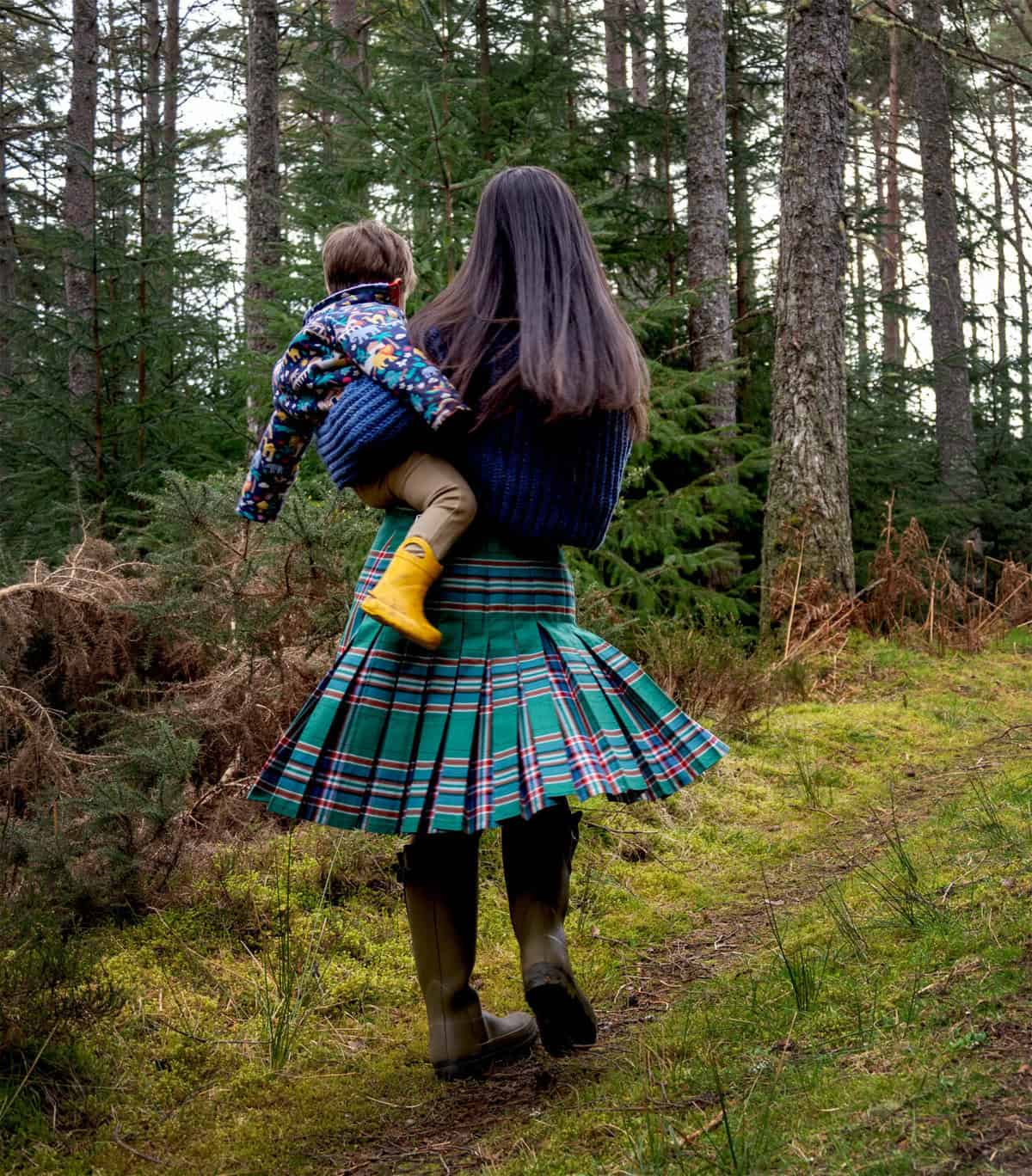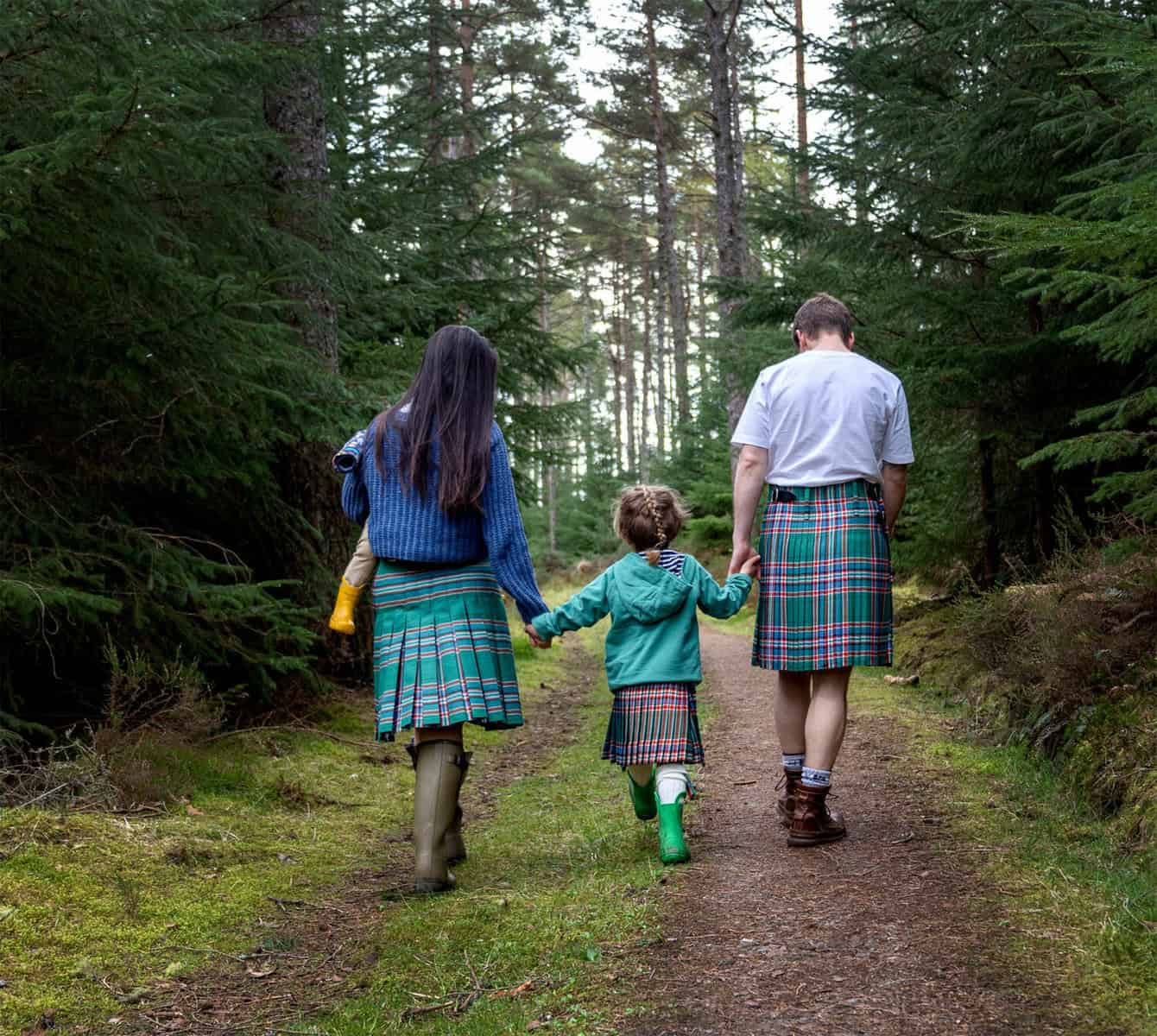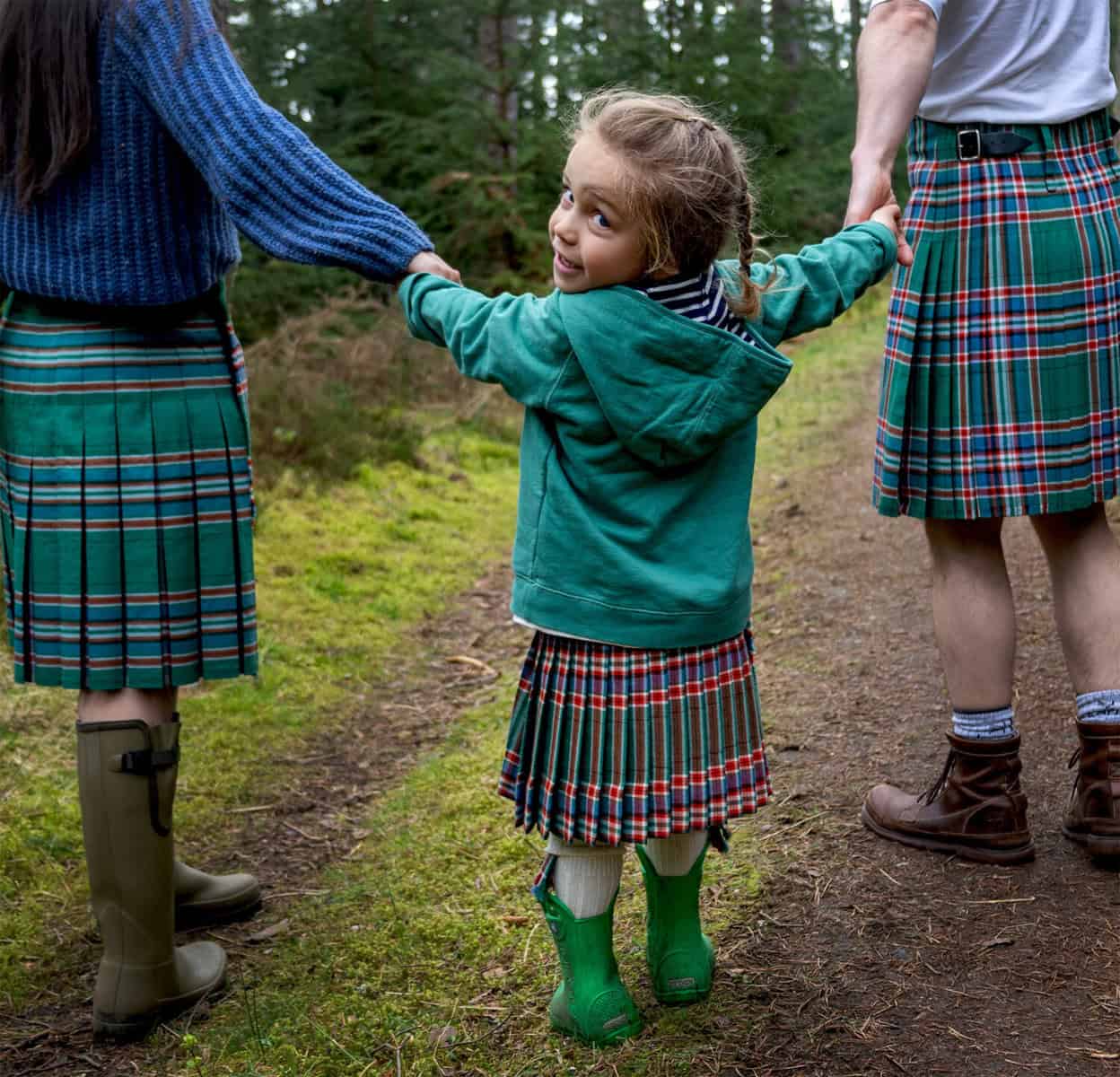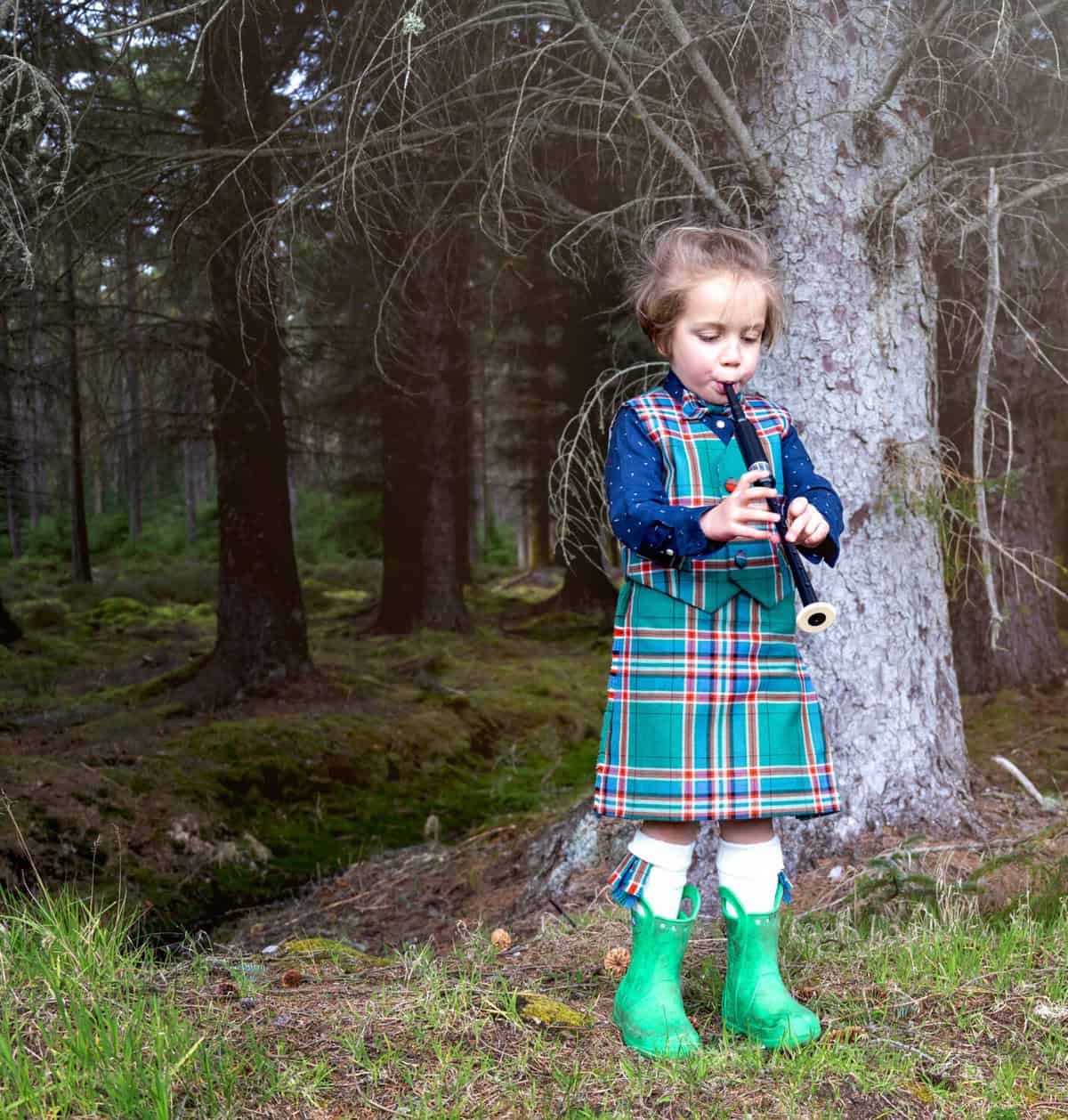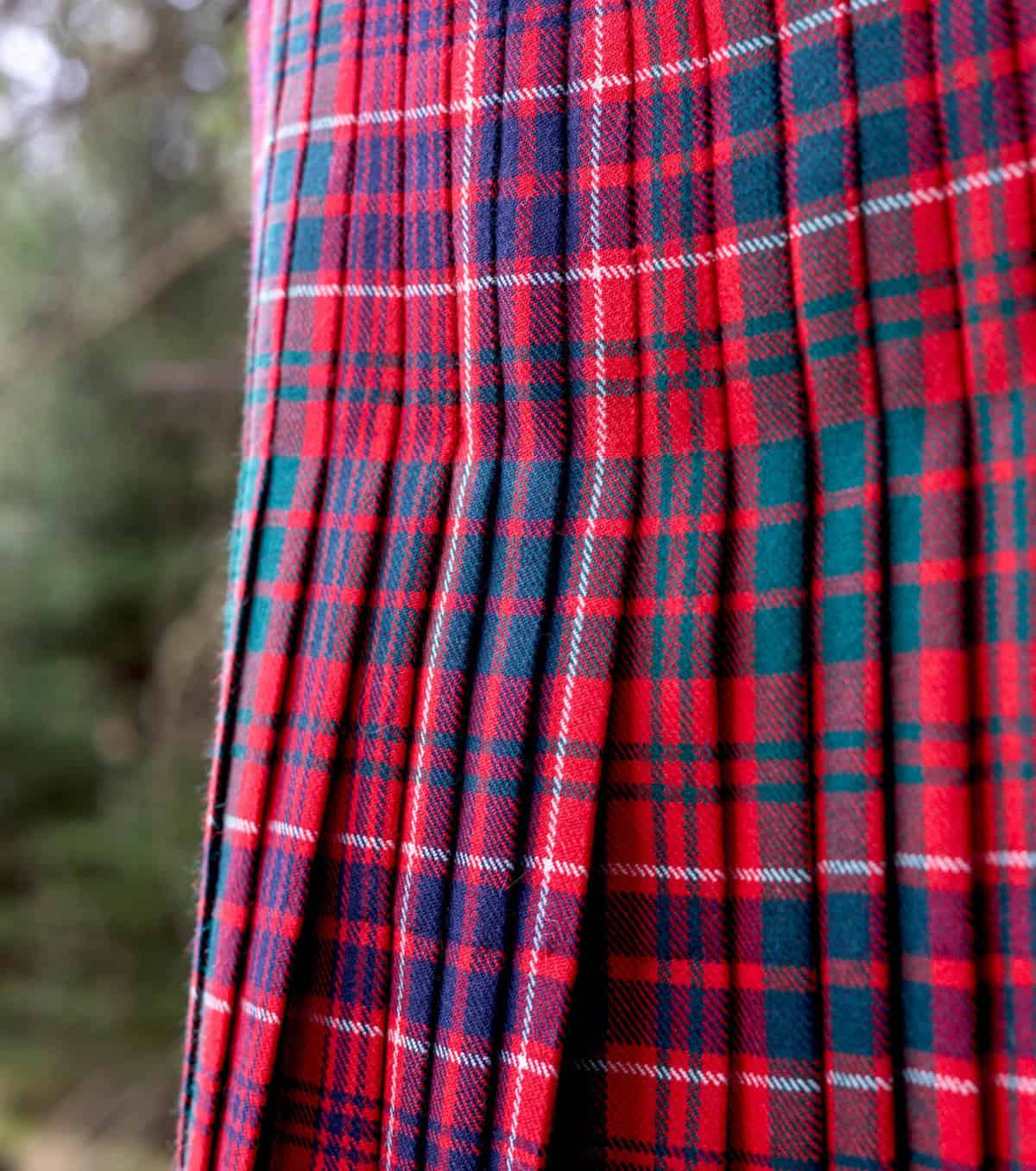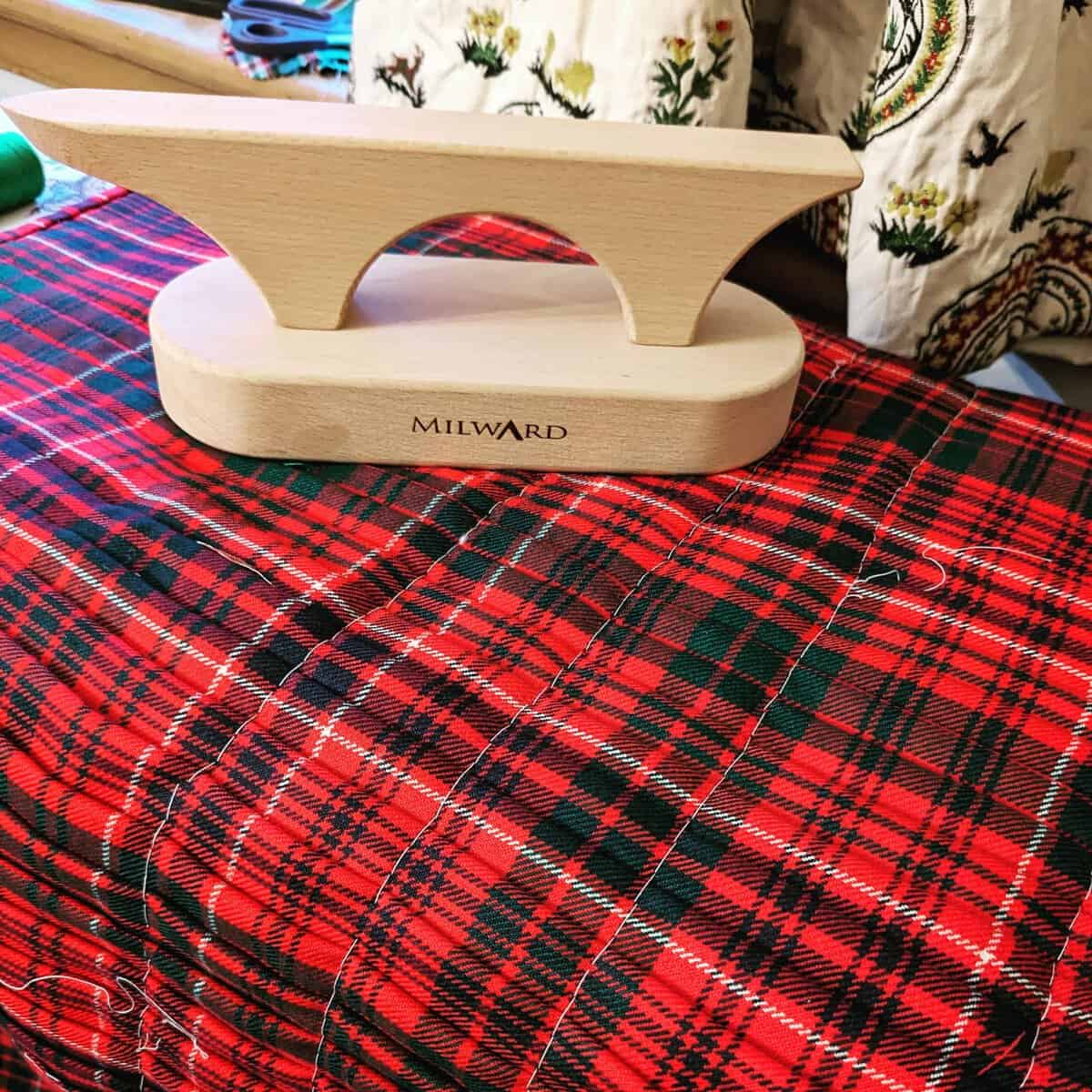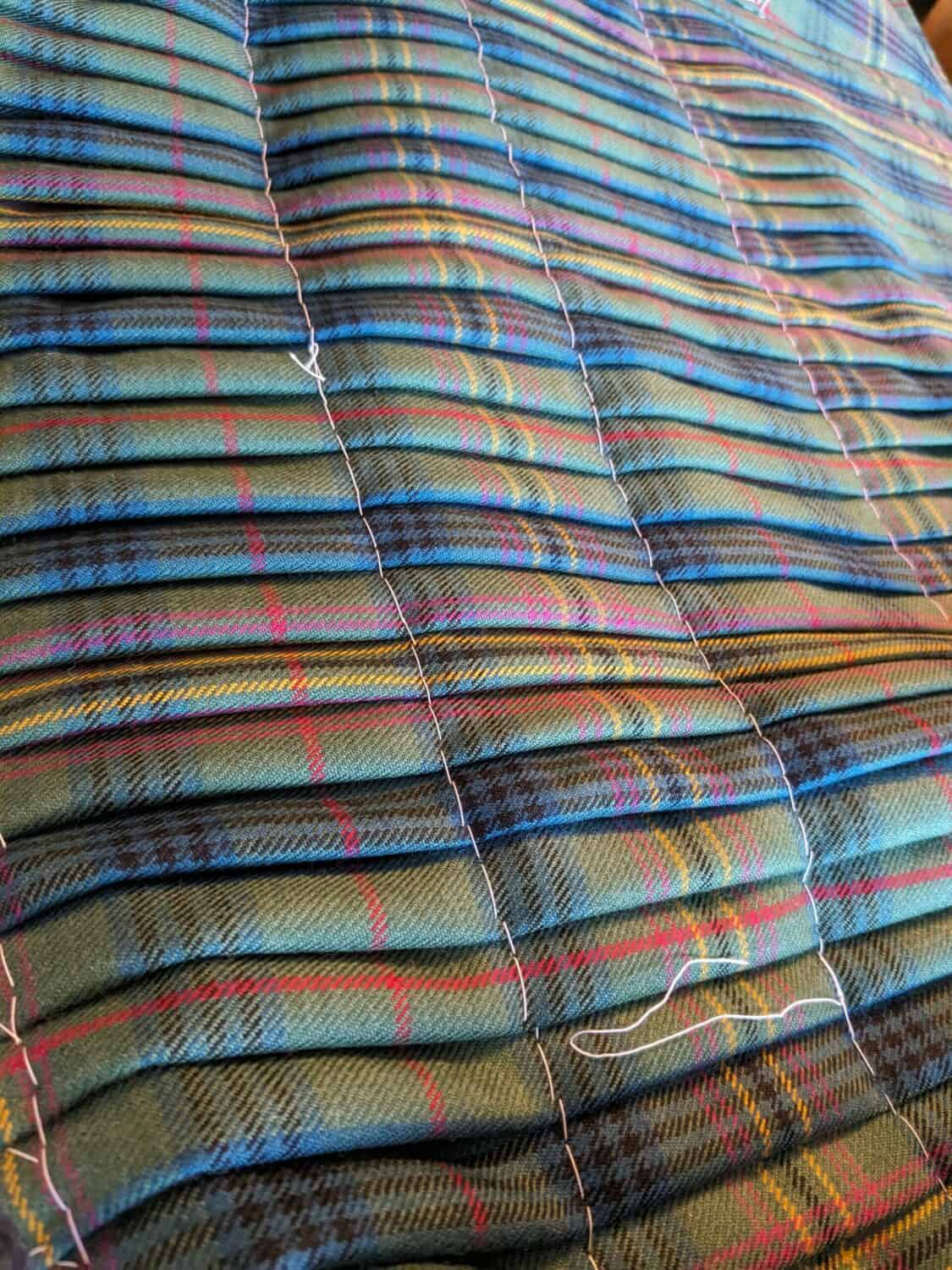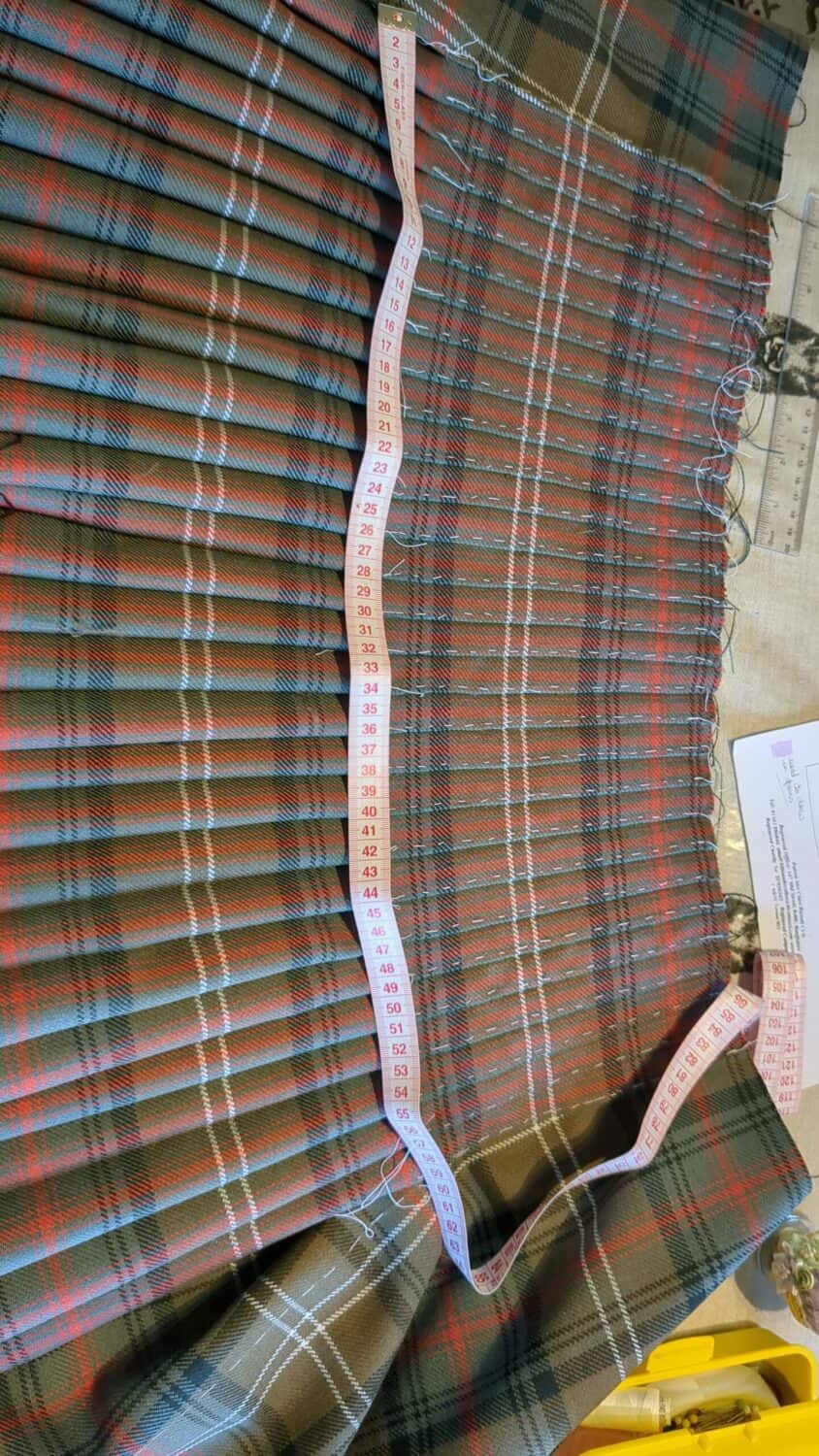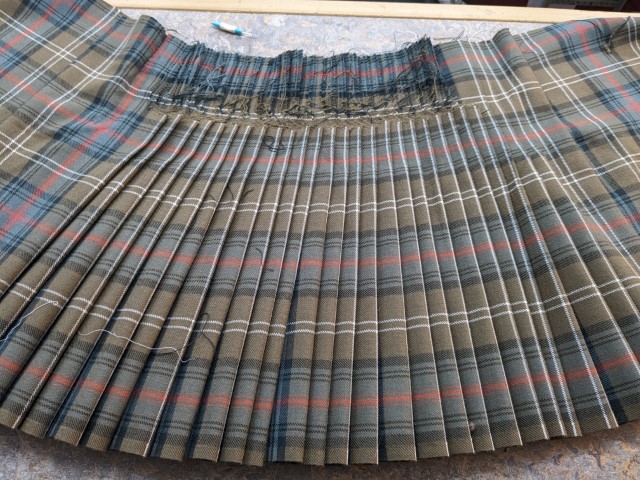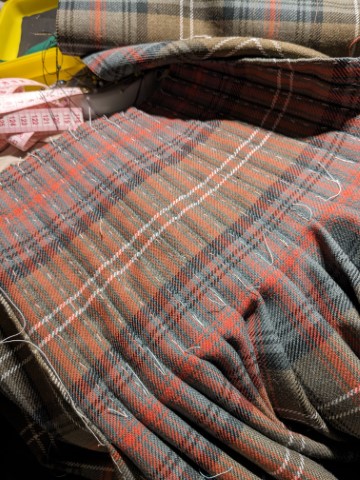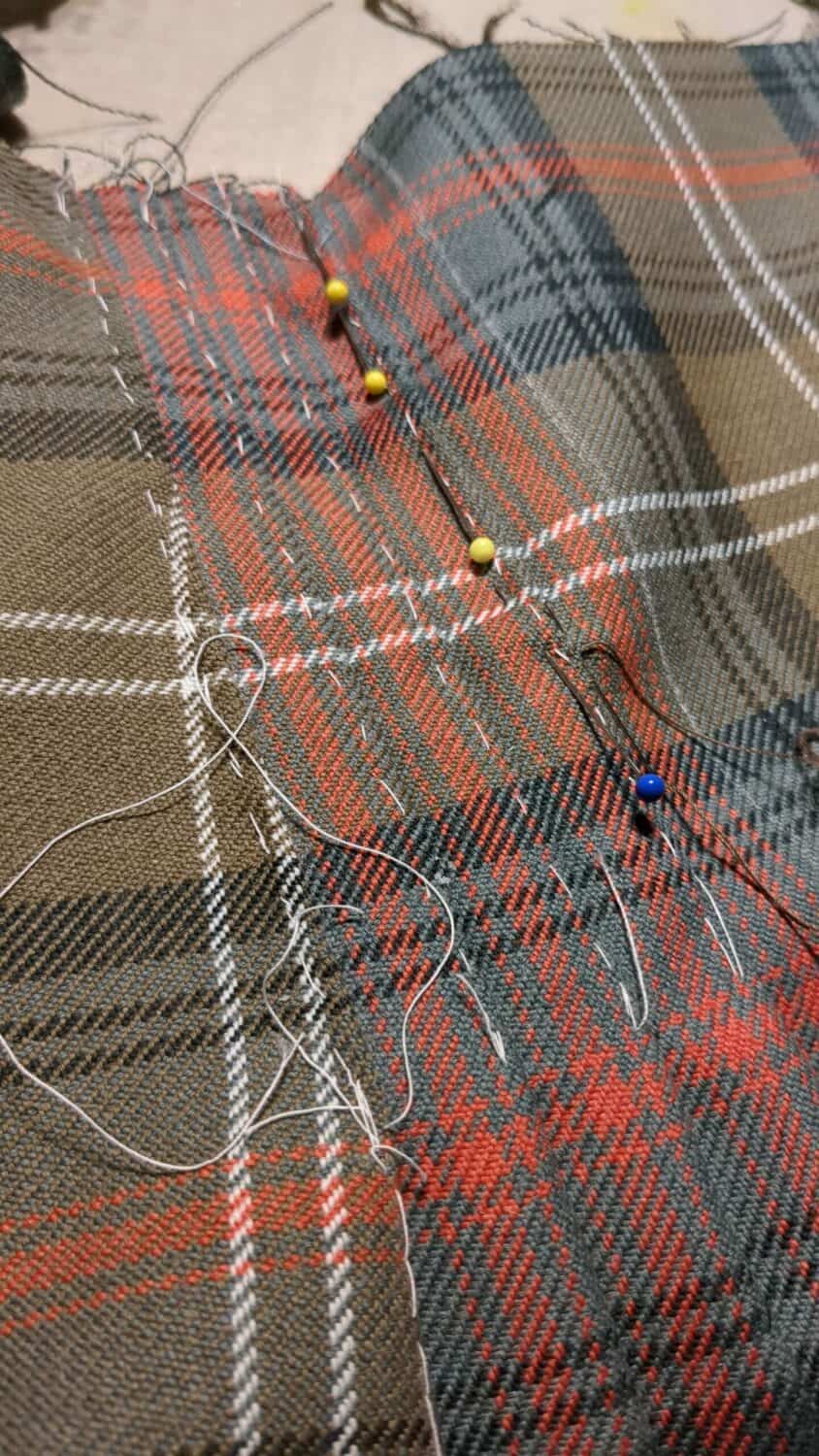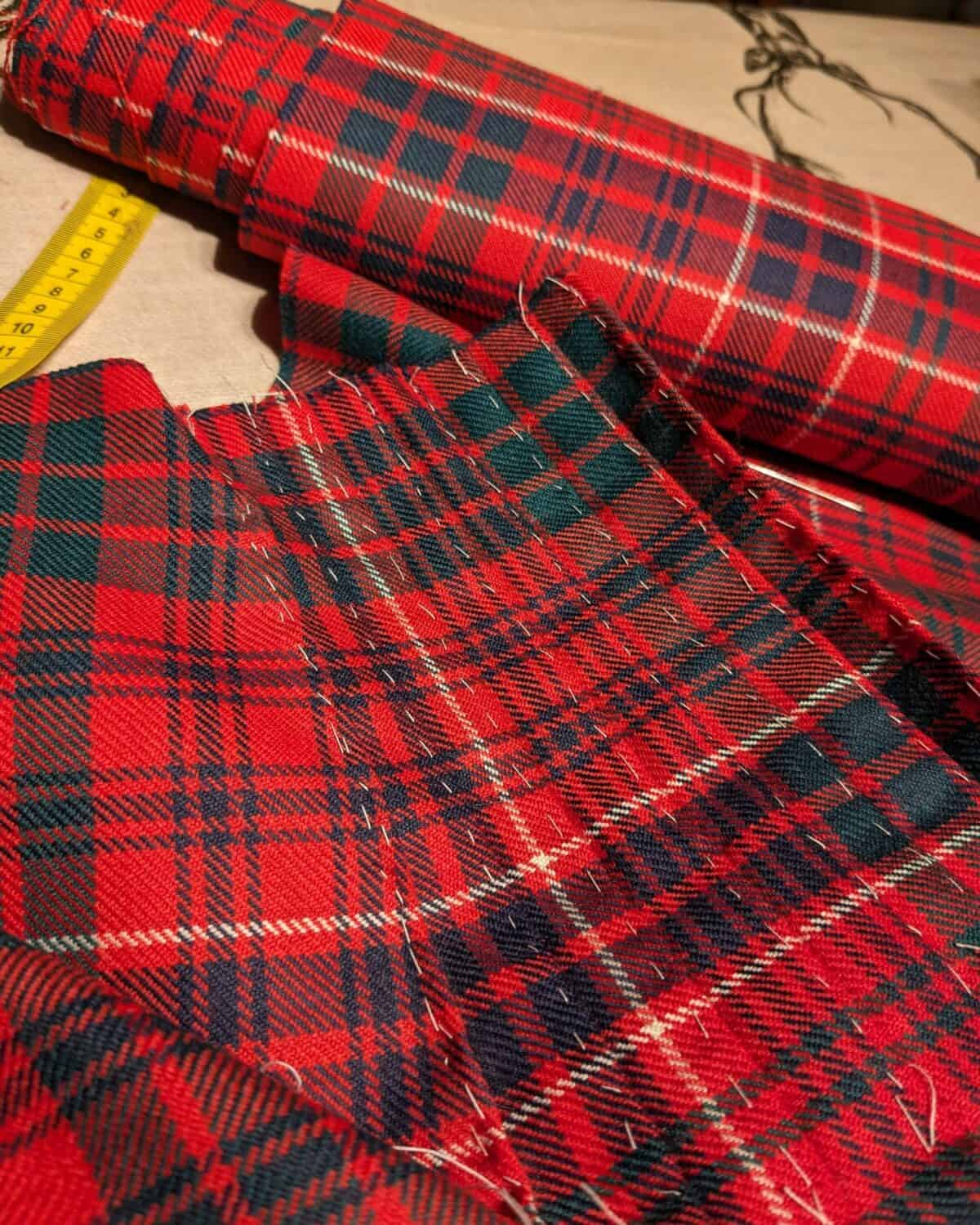The Kilt
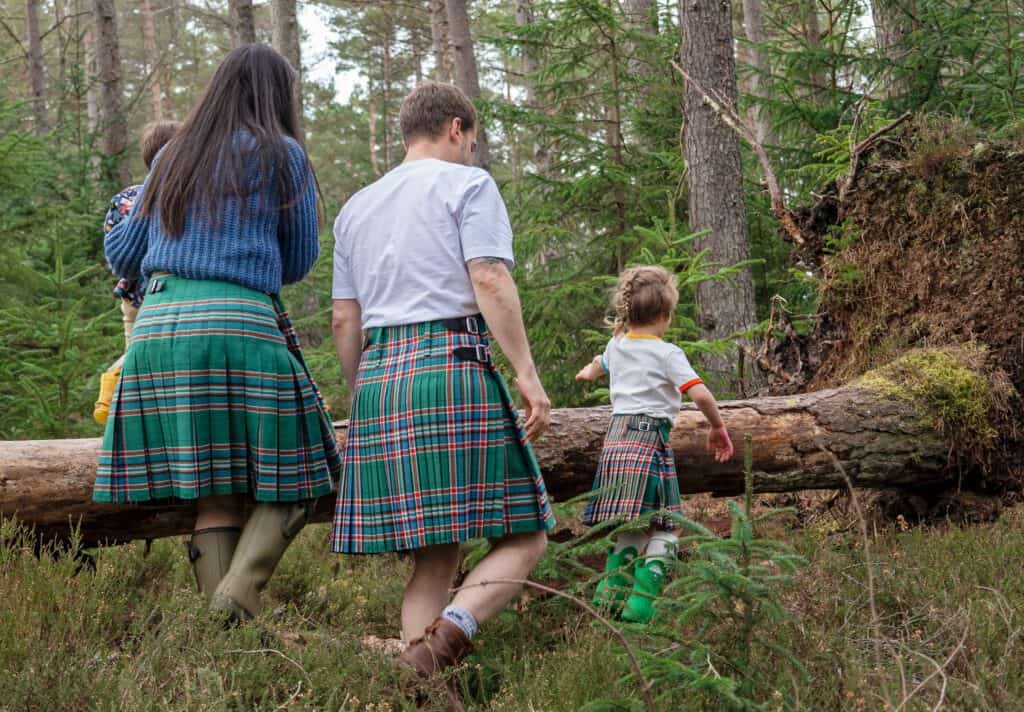
The kilt is a historical garment dating back to the 16th century. It has evolved over the centuries from the “little wrap” feileadh beg to the”big wrap” feileadh mor. It has evolved from a belted plaid into an intricately constructed garment, traditionally an 8m of cloth wrapped round featuring pleats at the rear.
Various hand stitching techniques are used, from the fell stitch, herringbone and slip stitch to the more intricate knot stitch used on the vent & opening. Men’s kilts traditionally have belt (sporran) loops. Generally, there are 3 straps (different colours available on request) and three fringe edges (but can be made with 1,2, 3 or whatever the requirements) and hangar tapes can be optional.
Each kilt is made to measure. A customer’s waist, height, and seat are taken to calculate the length of the kilt, and from there, the depth of pleats and the width of pleats at both the waist and seat are calculated, resulting in a truly personalised, made-to-fit garment.
In pictures, the ladies’ kilt is box pleated to the band, which means that the pleat hides all the vertical lines.
The boy’s kilt is an example of the stripe, which is where the pleats feature the same line down in each pleat. Used traditionally in military kilts, it gives a smart, regimented style.
The man’s kilt (in pictures) is an example to set, this is where the pleats continue across the rear, and complicated maths is required to calculate exactly what is needed to continue the pattern through!
